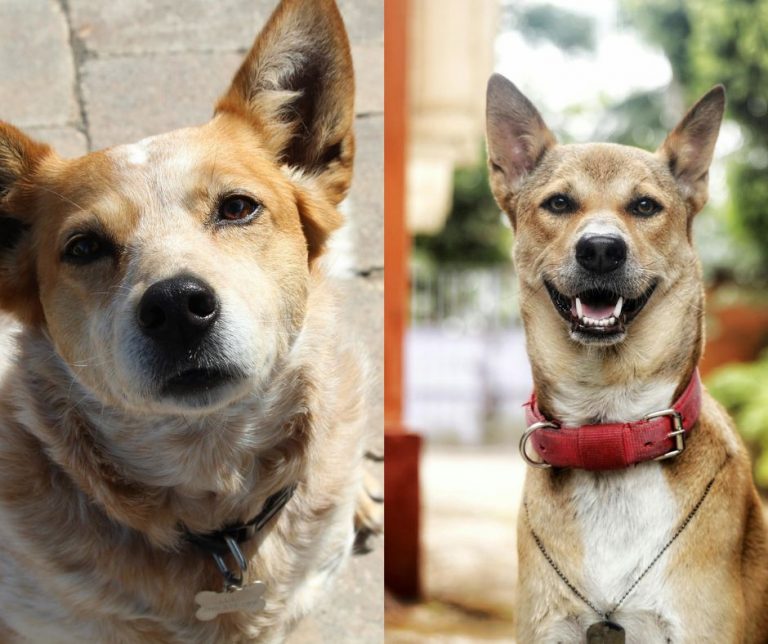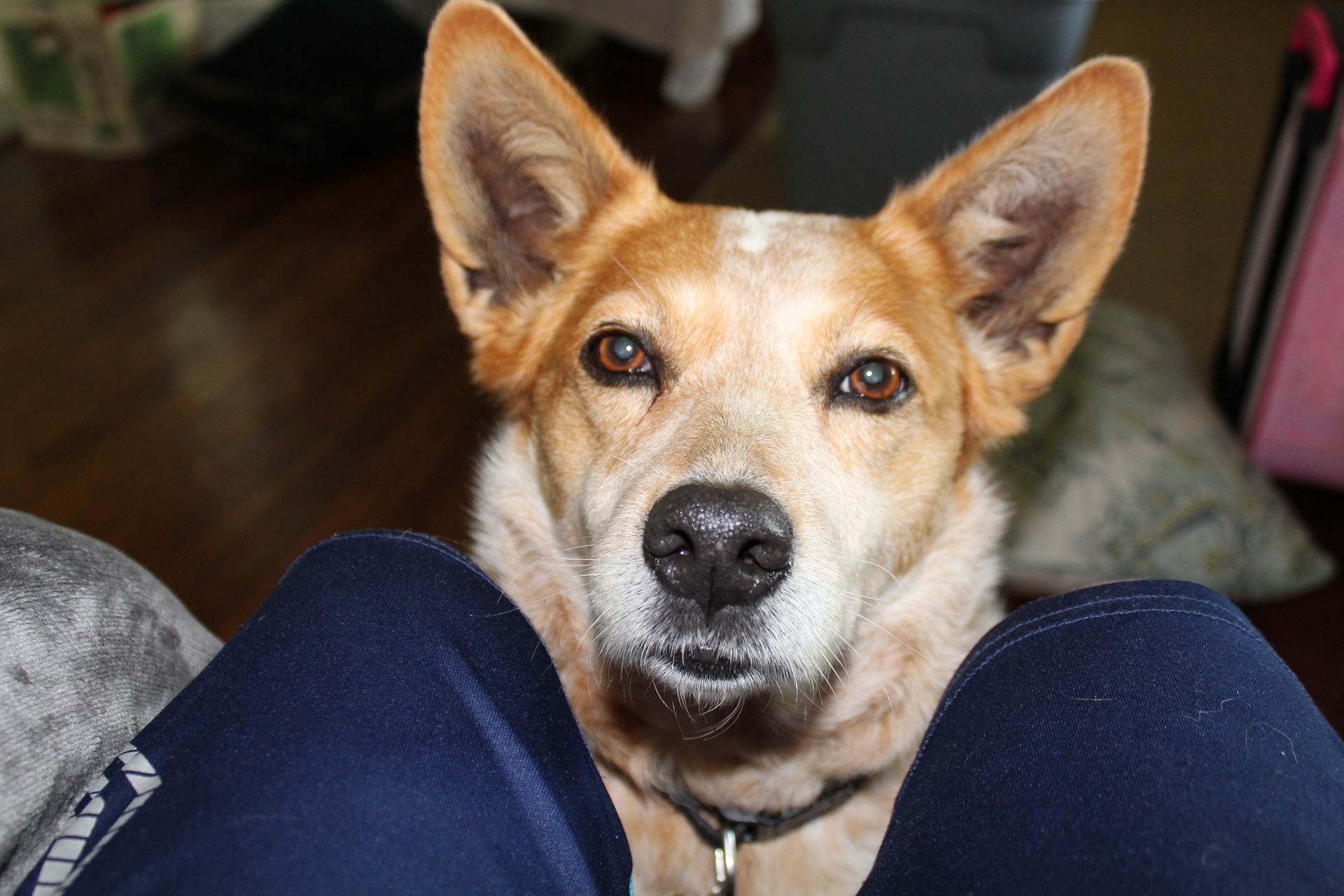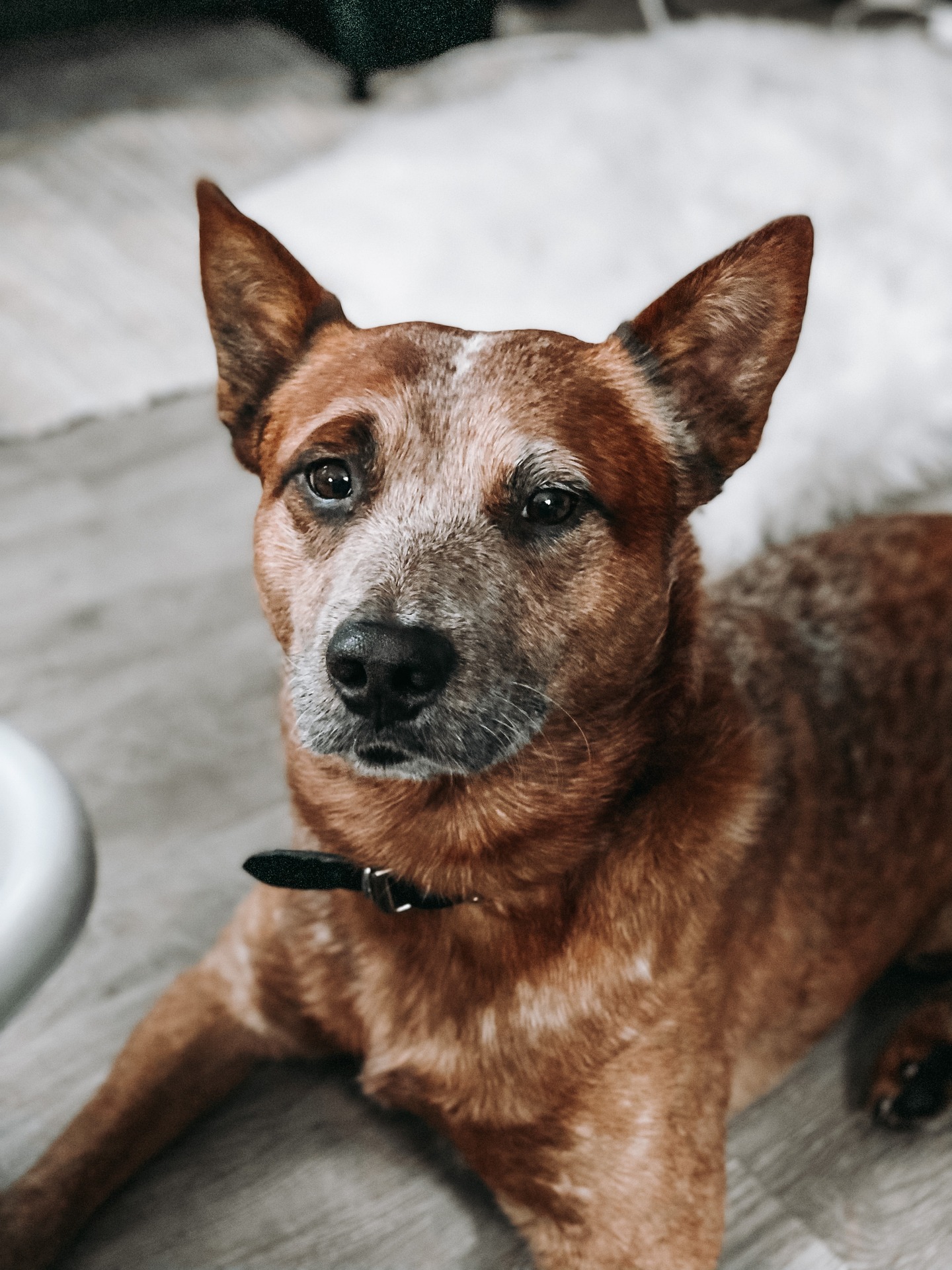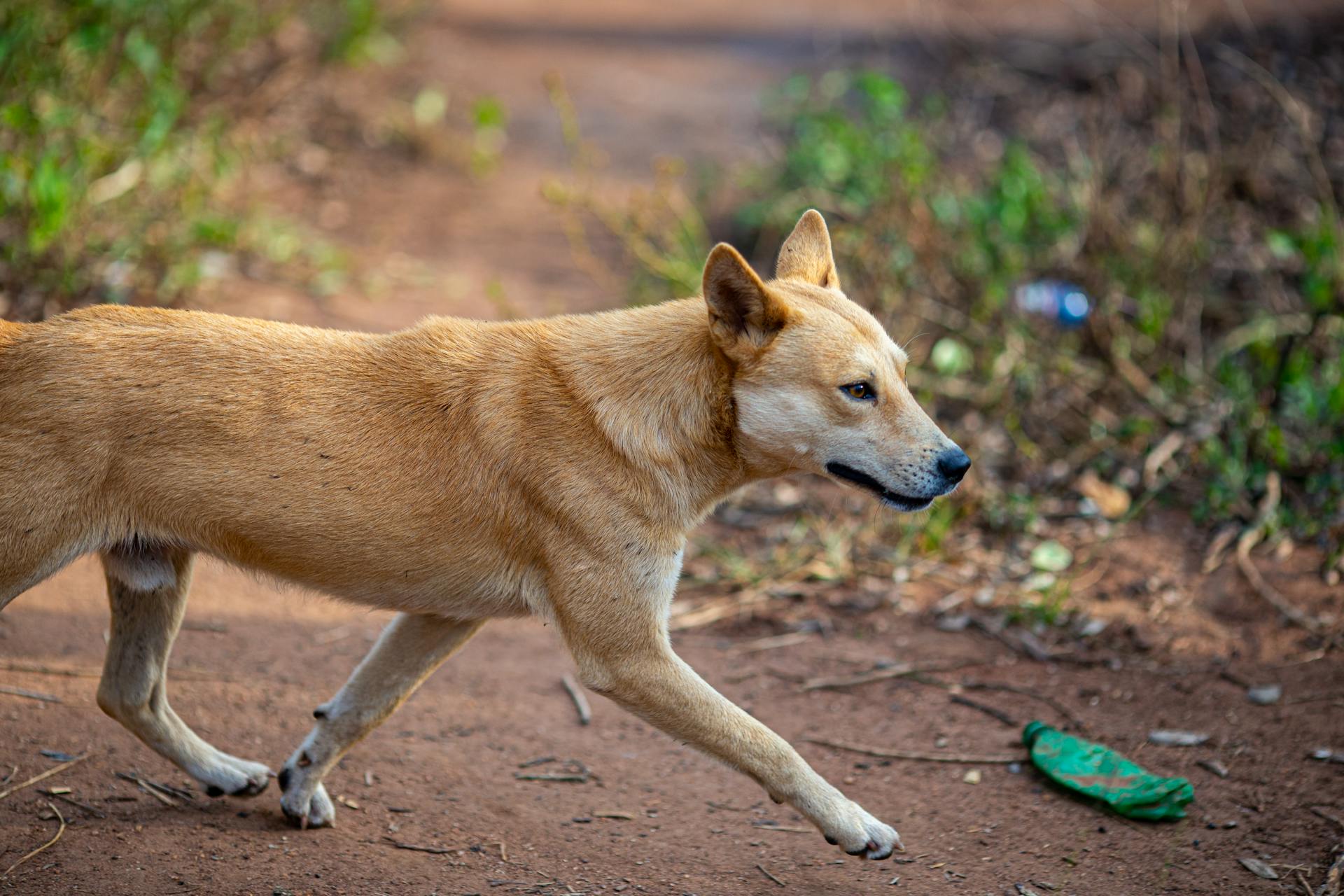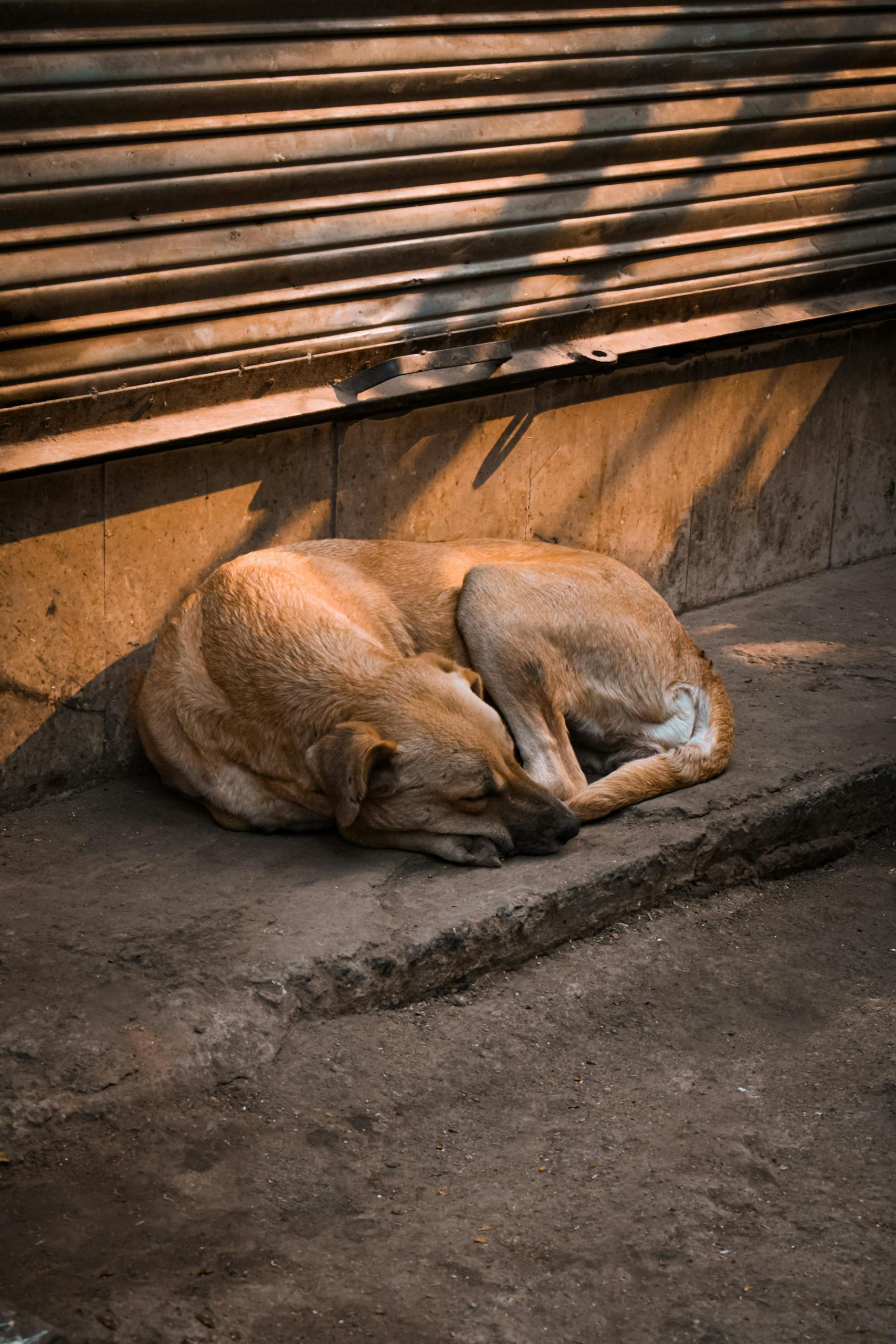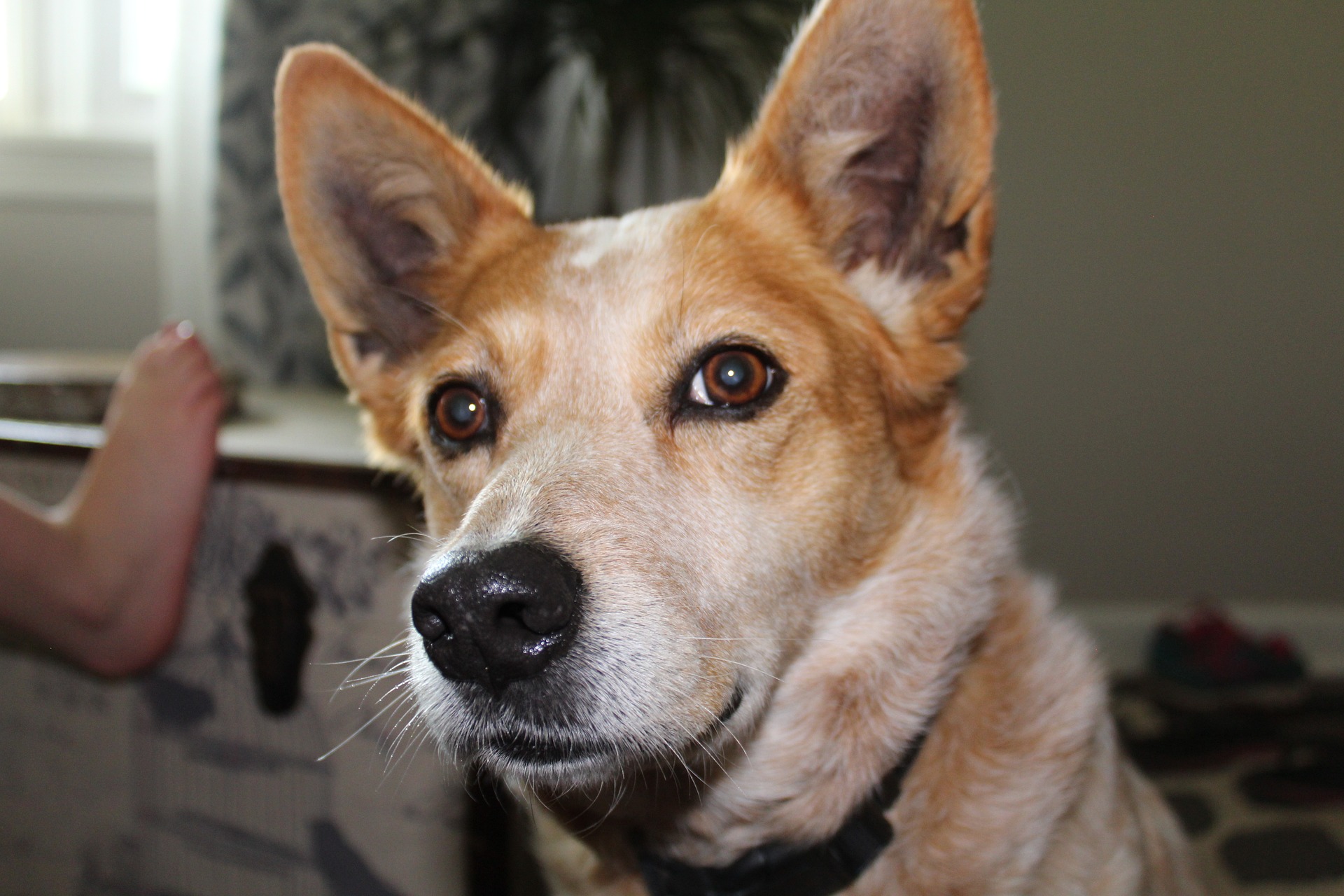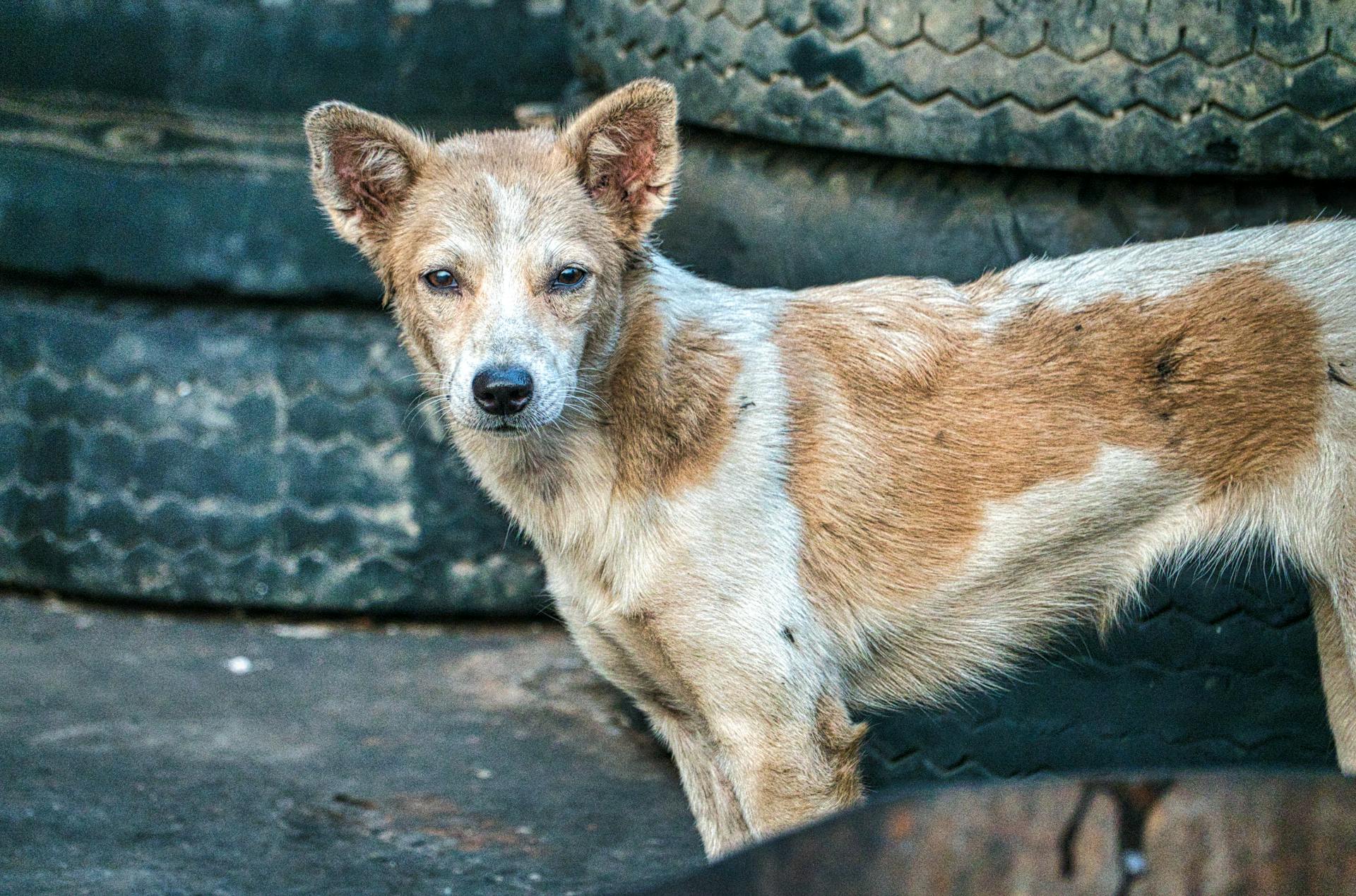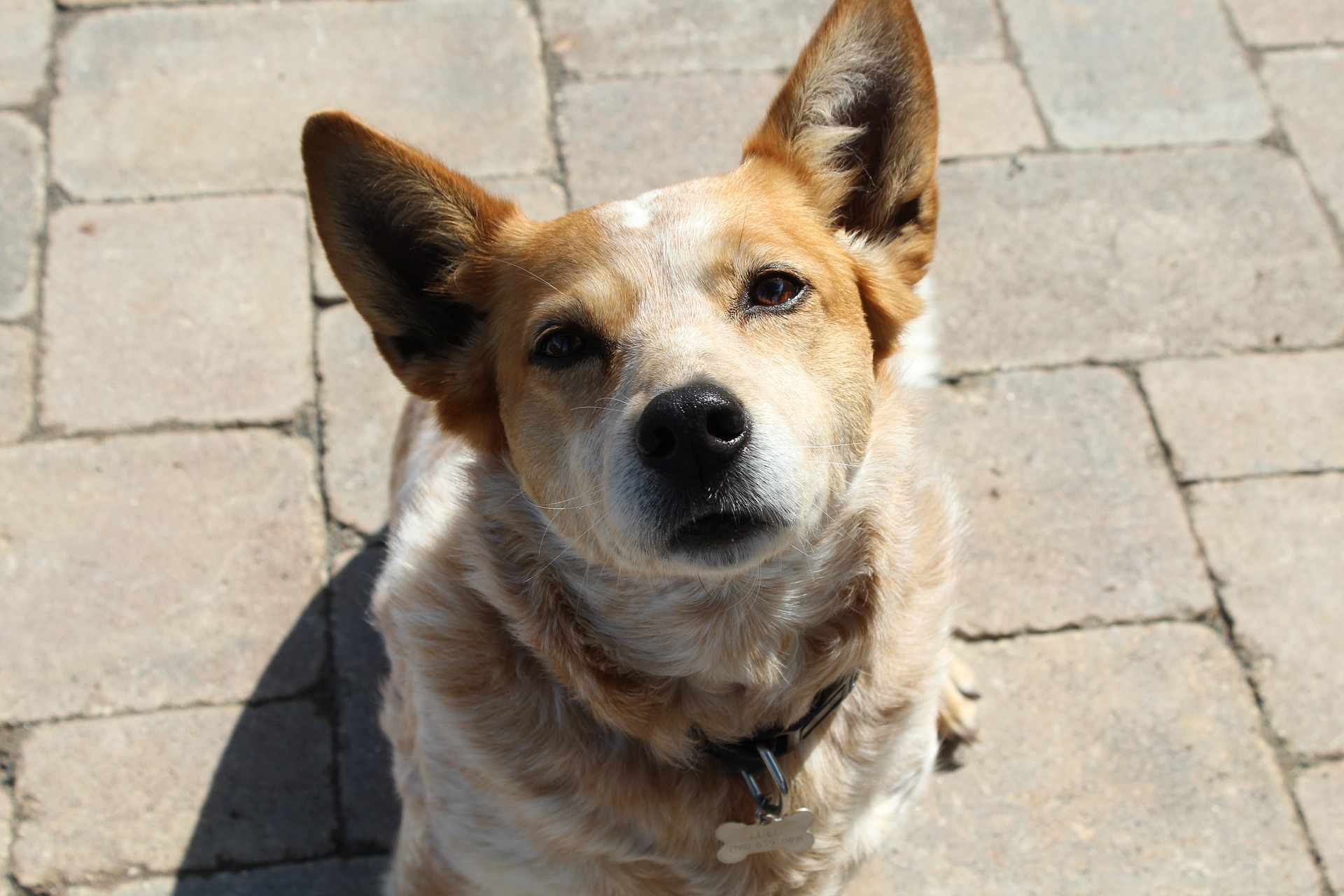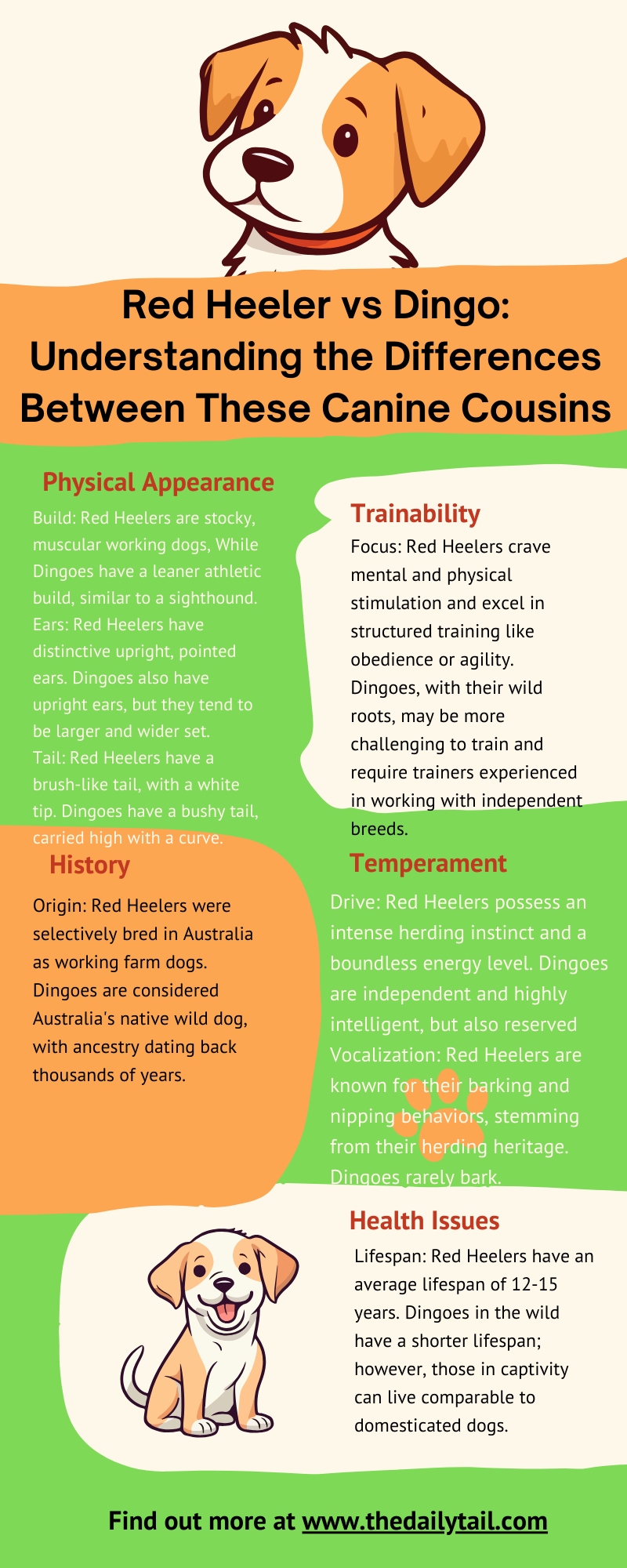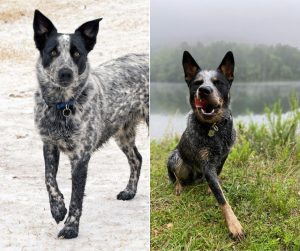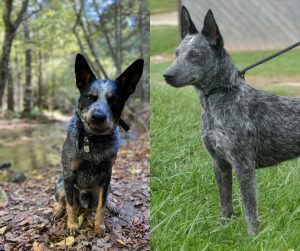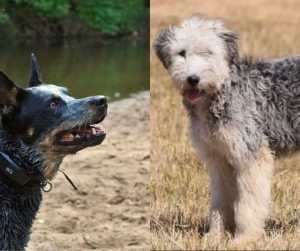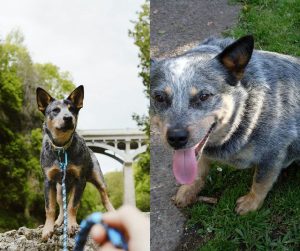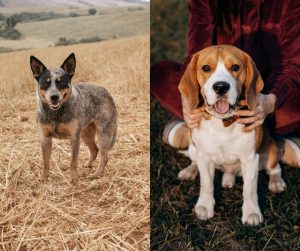Years of sharing my life with dogs have taught me to appreciate the incredible diversity within the canine kingdom. Take the Red Heeler, for instance – a ball of tireless energy with a stunning rust-colored coat. But did you know there’s a wild cousin Down Under sporting a similar look?
That’s the Dingo, Australia’s iconic wild dog. While their coats might cause confusion, these two canines are worlds apart. Let’s unpack the key differences between Red Heelers and Dingos in five fur-ever fascinating facts, exploring their physical appearance, temperament, trainability, history, and health!
When considering the Red Heeler vs Dingo dog breed comparison, it’s fascinating to note the unique characteristics of these two distinct canine species, both hailing from Australia.
The Red Heeler, also known as the Australian Cattle Dog, is a domestic breed known for its intelligence and work ethic. They are bred for herding cattle and are admired for their resilience and energy.
On the other hand, there stands the wild and enigmatic Dingo, an animal surrounded by both intrigue and myth. The Dingo holds a status as a wild dog of Australia, often characterized by its resourceful nature and adaptability.
The Red Heeler boasts a compact frame and is slightly smaller and lighter than the Dingo, which presents a more robust and larger stature. This difference in size and weight does not diminish the Red Heeler’s spirited performance in its herding duties.
A contrast also exists in their expected lifespans and maintenance needs, with the Red Heeler generally having a shorter lifespan and requiring less grooming compared to the often self-sufficient Dingo.
While both share traits of hardiness, the environments they thrive in and the roles they fulfill in human lives differ, with Red Heelers predominantly as working companions and Dingoes as wild, free-roaming animals.
The temperaments of these two breeds reflect their distinctive backgrounds and purposes.
Red Heelers are loyal, trainable, and require mental and physical stimulation, which aligns well with their role alongside humans.
Dingoes, on the contrary, are more independent creatures with strong survival instincts, reflecting their life in the wild.
These differences are vital to understanding each breed’s care requirements, particularly considering the level of activity they need and the types of training that work best for them.
Key Takeaways
- The Red Heeler and Dingo both originate from Australia but serve different roles in their habitats
- Red Heelers are smaller, live shorter lives, and are known for their herding abilities, while Dingoes are larger and more independent
- Understanding each breed’s unique temperament and care needs is crucial for their welfare and coexistence with humans
Origins and History
When delving into the rich tapestry of the Australian Cattle Dog and the Dingo, it’s a tale of rustic beginnings and practical breeding. From the Australian outback emerges a story of two canines, each with a distinct path that has captivated dog enthusiasts and historians alike.
Australian Cattle Dog Origins
The Australian Cattle Dog has robust historical roots that trace back to Australia during the 19th century. These dogs were specifically bred for the harsh conditions of the Australian landscape—aptly named the Land Down Under.
Thomas Simpson Hall, a pioneer in the breed’s creation, crossed domesticated dogs with wild dingoes to produce a capable herding dog known as Halls Heeler. This breed was prized for its ability to work cattle over expansive and rough terrains. Back in the day, the dog was also known as the Queensland Blue Heeler.
Following the death of Thomas Simpson Hall, there were many other breeders that wanted to refine Halls Heeler. Nowadays, we have a Blue Heeler and Red Heeler. They are the same breed, but with different coat color.
Red Heeler Development
The Red Heeler, a variant of the Australian Cattle Dog, sports a striking red coat. The development of this breed commenced in the 19th century, where they became known for their resilience and tenacious work ethic.
Its lineage can be directly linked to the early breeding programs which involved dingoes, leading to the hallmark color and formidable herding instincts of the Red Heeler, a cherished figure in rural Australian life.
Dingo Background
Wild dingoes are an iconic symbol of Australia‘s unique fauna. These canines are not just feral dogs but are considered a separate taxon, having roamed the Australian wilderness for thousands of years.
Historically, dingoes have played a role in Australian Cattle Dog lineage, contributing to its hardy constitution and natural instinct for herding and survival in Australia’s challenging environments.
Physical Characteristics
When comparing the Red Heeler and the Dingo, it’s fascinating how each breed’s physical traits reflect its unique background. The Red Heeler is a domesticated companion with characteristics suited to herding, whereas the Dingo, as a wild canine, has features adapted to a more rugged, untamed environment.
Coat and Color
The Red Heeler sports a double coat that can be quite dense, offering protection in various weather conditions. Their trademark coat is often a speckled or mottled pattern, and true to their name, shades of red dominate.
Dingoes, on the other hand, typically have a single coat and can exhibit a range of colors, although they are most commonly seen in their characteristic sandy to red tones. Both breeds can experience changes in coat thickness in response to seasonal variations.
Body Structure
In terms of physique, the Red Heeler is slightly smaller, often reaching 9 cm shorter in height compared to their wild counterpart. They tend to have a sturdy, muscular build that equips them for long days of work on farms or ranches.
Dingoes usually boast a leaner and rangier frame, optimized for endurance and agility required for survival in the wild. Both breeds exude energy and strength, and regular exercise is crucial to maintain their health and vitality.
Distinguishing Features
One can identify a Red Heeler not only by their coat color but also by their broad skull and pointed ears.
Dingoes are also known for their pointed ears, which contribute to their keen sense of hearing, but they have a more wolf-like facial structure, which sets them apart from domestic dogs.
Their tails differ as well, with the Red Heeler’s tail being slightly more robust and the Australian Dingo’s tail being longer and bushier. These distinguishing features are the touchstones of their respective lineage and speak volumes about the environments they are each adapted to.
Temperament and Behavior
When it comes to understanding our canine companions, temperament and behavior really shine a light on what makes each breed unique. For the Red Heeler and the Dingo, their behaviors are a dance of domestication and wild instincts. It’s like uncovering a story of two different worlds, each with its own set of rules.
Cattle Dog Disposition
The Red Heeler, also known as the Australian Cattle Dog, is a ball of energy, intelligence, and loyalty. These dogs are alert and eager to please, traits that make them exceptional at herding work.
Their nipping at cattle’s heels—a method of herding—shows not just their working heritage but their smart, task-oriented mindset. However, because they are so tied to their jobs, they can sometimes be a bit aloof with strangers.
Owners often celebrate their Red Heelers’ strong bond and commitment to their human family.
Dingo Nature
Dingoes, embodying the spirit of the Australian wild, exhibit a blend of independence and aloofness. They are not necessarily aggressive without provocation, but their untamed nature can be misinterpreted.
Dingoes, though intelligent in their own right, have a temperament suited for a solitary or pack life in the wild, contrasting with the Red Heeler’s domesticated loyalty. They are alert and resourceful, surviving in diverse environments, from deserts to forests.
Understanding Herding Behavior
Both Red Heelers and Dingoes share an instinct to control movement, which emerges from their intelligence and working backgrounds.
The Red Heeler’s herding behavior, characterized by nipping at the heels of cattle, shows a controlled precision and a desire to work closely with humans.
Comparatively, a Dingo’s intelligence exhibits through its survival tactics and its ability to navigate wide terrains autonomously. This comparison highlights how breeding and environment shape an animal’s behavior and roles within human society or nature.
Training and Intelligence
When comparing the Red Heeler and the Dingo, their training and intelligence reflect their distinctive backgrounds and roles in canine society. Red Heelers, bred for herding, often show high trainability, whereas Dingoes, being wild animals, present unique challenges in training.
Training Approaches
Red Heelers: They thrive with consistent and positive reinforcement techniques. As intelligent dogs, they benefit from clear obedience training that includes:
- Verbal commands: They respond well to concise and firm cues
- Physical cues: Gestures can assist in conveying commands during training
Dingoes: Not traditionally kept as pets, Dingoes require a different approach. Training a Dingo often involves:
- Understanding wild behaviors: requires patience and adaptation to natural instincts
- Encouraging trust: crucial for any interaction or training efforts with Dingoes
Intelligence Level
Red Heelers: Known for their sharp intellect, Red Heelers exhibit high levels of intelligence. Their mental capabilities make them suitable for various canine tasks, beyond just herding.
Dingoes: As natural survivors, Dingoes possess instinctual intelligence that is less about obedience and more about adaptation to their environment.
Behavioral Conditioning
Red Heelers:
- Cognitive exercises: Enhance their problem-solving skills and prevent boredom
- Physical activity: Essential to channel their herding instincts and abundant energy
Dingoes:
- Environment-based learning: Their learning is more through environmental interaction than structured exercises
- Behavioral observation: Understanding their actions in context is key to any conditioning
Exercise and Activity Levels
When choosing between a Red Heeler and a Dingo, it’s important to consider their needs for daily exercise and their inherent energy levels. Both are active and require ample opportunities to stay healthy through regular physical activity.
Activity Requirements
Red Heelers are Australian Cattle Dogs, and like all herding breeds, they have high energy levels that necessitate regular exercise.
They thrive when given a job to do and will be happiest with a task that engages both their mind and body.
On the other hand, Dingoes, being wild dogs, have a natural instinct to roam long distances and require significant daily exercise to satisfy their wanderlust.
- Red Heelers: Need structured exercise each day to meet their activity requirements
- Dingoes: Demand more free-form and extensive periods of exercise
Exercise Ideas
Engaging these dogs in exercise that mimics their natural working environment is a fantastic way to keep them fit.
For Red Heelers, tasks that involve agility training or herding activities can make exercise fun and meaningful.
Since Dingoes aren’t typically household pets, long, explorative walks or secure off-leash time in large, open spaces might better suit their exercise needs.
- Agility: Courses or backyard obstacle setups
- Herding drills: For Heelers, if appropriate and available
- Hikes and walks: Explorative routes for Dingoes and Heelers alike
Staying Healthy
Regular exercise is key to maintaining health, and for working breeds like the Red Heeler, it can also prevent behavioral issues.
Both breeds benefit from a well-rounded exercise routine that includes both physical exertion and mental stimulation.
Owners should provide opportunities for their dogs to play, run, and explore.
- Mental stimulation: Puzzle toys or interactive games for brain fitness
- Physical health: Endurance activities, such as running or swimming, for a strong heart and muscles
- Social interaction: Dog parks or playdates, especially important for the sociable Red Heeler
Health and Longevity
When considering a Red Heeler vs Dingo, potential owners should be mindful of the breeds’ specific health concerns and their overall life expectancy.
Breed-Specific Conditions
Red Heelers, also known as Australian Cattle Dogs, are robust dogs but they can be prone to certain health issues like hip dysplasia.
Hip dysplasia is a genetic condition where the hip joint doesn’t fit together perfectly. If not properly addressed, it can lead to arthritis or lameness.
Dingoes, being wild dogs, are typically hardy but less is known about their breed-specific health problems due to their undomesticated nature.
Healthcare Tips
Caring for these dogs goes beyond routine vet visits.
A balanced diet, regular exercise, and preventive measures like vaccinations and parasite control are paramount.
Red Heelers might benefit from hip and joint supplements, especially if predisposed to hip dysplasia.
- Regular check-ups: at least once a year
- Vaccination and parasite control: as recommended by the vet
- Exercise: daily activity to maintain healthy weight and joint mobility
- Diet: high-quality, breed-appropriate food
Maximizing Lifespan
The longevity of Red Heelers and Dingoes is subject to their health status and lifestyle.
Typically, a Red Heeler’s lifespan ranges from 10 to 15 years, while an Australian Dingo might live a bit longer. Wild individuals often reach around 5 years due to harsher conditions, but captive Dingoes can live up to 10 years or more.
- Mental stimulation: keeps them engaged, reducing stress and behavior problems
- Regular dental care: to prevent dental diseases that can affect overall health
- Spay/neuter: can decrease the risk of certain cancers and unwanted behaviors
Breeding and Genetics
While comparing the Red Heeler and the Dingo, it’s fascinating to explore the tapestry of their breeding and genetics. Both dogs hail from Australia, but their histories and breed standards set them apart.
Understanding Breed Standards
Red Heeler
The Red Heeler, also known as the Australian Cattle Dog, is recognized by kennel clubs like the American Kennel Club (AKC). The American Kennel Club puts the Red Heeler in the herding group.
They adhere to specific breed standards, which include traits like size, color, and temperament. For example, they are typically shorter than Dingoes.
- Size: Should be well-balanced and sturdy
- Color: Can be either red or blue speckled
Dingo
On the other hand, the Dingo isn’t bred to conform to kennel club standards due to its status as a wild dog. He is not a domestic dog like the Red Heeler breed. Its genetic makeup remains more consistent with natural selection than selective breeding.
- Genetic Consistency: Dingoes have less variation in size and appearance than domesticated breeds
Genetic Traits
The genetic traits of these canines are rooted in their unique histories.
Red Heelers were selectively bred for traits beneficial to cattle herding, such as energy and resilience. They have a mix of Dingo in their lineage, contributing to their strong work ethic and stamina.
- Red Heeler: Strong herding instincts, moderate maintenance
- Dingo: Generally larger and potentially longer-lived, with low maintenance due to being a wild animal
Responsible Breeding Practices
Responsible breeding is vital to maintain the health and standard of breeds.
It involves following ethical guidelines, such as health screening and maintaining pedigrees.
The Red Heeler, whether referred to as Blue Heeler, Queensland Heeler, or simply as an Australian Cattle Dog, requires breeders to ensure genetic diversity while still meeting breed standards.
- Health Screenings: To prevent the spread of hereditary diseases
- Pedigrees: Maintain a documented lineage to preserve breed integrity
Adoption and Care
When adopting a Red Heeler or a Dingo, it’s crucial to understand the responsibilities of care and companionship. Here’s how to choose the correct breed for your lifestyle, create a supportive environment, and build a loving relationship with your new pet.
Choosing the Right Dog
Red Heelers are a popular choice among ranchers because of their high energy and work ethic, but they also make wonderful pets for active families.
They typically require a fenced yard for exercise and are known for their sociability and affection.
On the other hand, Dingoes are not common pets and can be more challenging to obtain and care for due to their wild nature and needs for independent space.
Creating a Supportive Home
Both breeds need a supportive home, but the care differs.
For a Red Heeler, prepare your home with:
- Sturdy toys: For engagement and to handle their strong jaws
- Exercise space: A secure, fenced yard to run and herd, as it’s part of their natural behavior
As for a Dingo, they are typically not suited for a home environment, requiring vast open spaces more akin to their natural habitat, which is difficult to replicate in a household setting.
Bonding and Companionship
Building a bond with a Red Heeler involves time, patience, and activities that stimulate both their mind and body.
They thrive on companionship and often form a close bond with one person. Include them in daily activities to enhance your connection.
Positive reinforcement and consistency are key in training.
Remember that Dingoes, being wild animals, may not seek the same level of closeness or exhibit domesticated dog behaviors. This makes them less suitable for those seeking a companion animal.
Socializing with other animals should be done cautiously. Red Heelers often do well with other pets if introduced properly, reflecting their affectionate and social nature.
However, a Dingo, with its more independent and instinctive behaviors, might not readily adapt to living with other pets.

